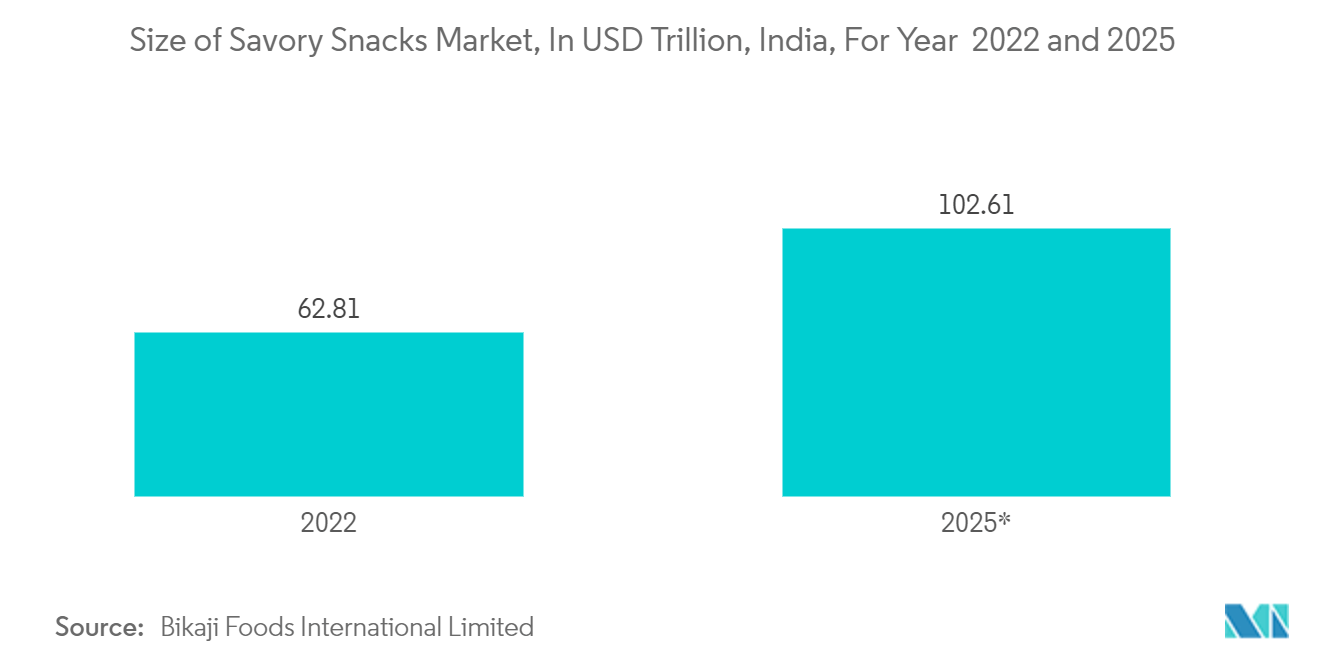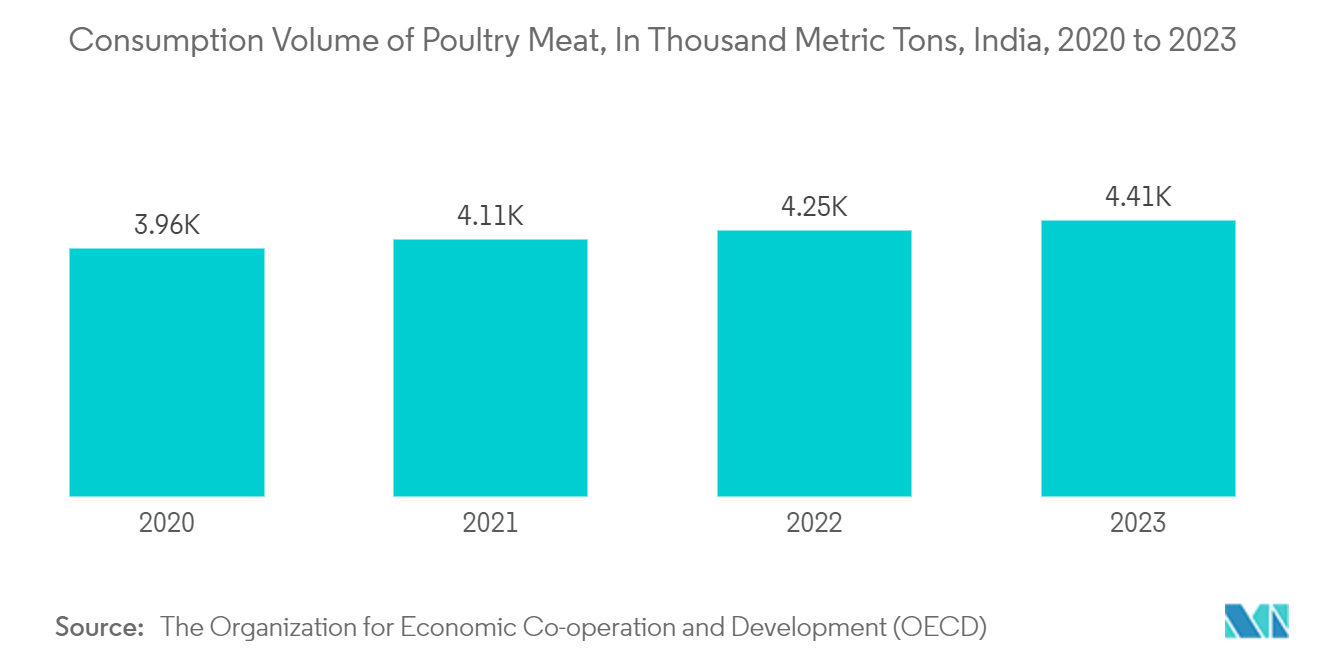Market Trends of India Flexible Plastic Packaging Industry
Rise in Lightweight and On The Go Consumption
- The Indian flexible plastic packaging industry is undergoing significant changes, with a clear emphasis on enhancing brand experiences. Convenience stands out as a primary catalyst for these transformations. Notably, there is a pronounced shift toward flexible packaging, particularly pouches. This surge is attributed to the convenience offered by both customers and manufacturers.
- The growing rate of urbanization across the country has strengthened the focus on convenient and sustainable packaging. With end users like fresh food, ready-to-eat, and coffee showing robust growth, the demand for pouch packaging is set to surge. According to a report by BDO India, a prominent management consulting firm, India's ready-to-cook food market is projected to reach INR 64 billion (approximately USD 0.76 billion) by 2025, marking a significant increase from its 2020 valuation of INR 30 billion (about USD 0.35 billion). This growth in ready-to-eat meal packages is anticipated to surge the demand for flexible plastic packaging during the forecast period.
- At present, sustainability is driving the growth of the county's flexible packaging market. Its benefits, including reduced raw material consumption, minimized use of natural resources during production, and lower waste generation compared to traditional formats, have positioned flexible packaging as the preferred choice for end consumers and manufacturers.
- Owing to the rising demand for eco-friendly packaging, several brands are launching innovative products across the market. For instance, in October 2023, Pakka Limited, an essential food packaging firm, introduced India's first compostable flexible packaging. Pakka's groundbreaking compostable flexible packaging showcases many features that highlight its commitment to environmental sustainability.
- Western culture's influence has brought a variety of snack foods to the Indian market but also cultivated a taste for diverse and innovative products. This trend is further bolstered by the expanding retail infrastructure and the rise of e-commerce, which make snack foods more accessible and fuel the growth of the snacks market. According to Bikaji Foods International Ltd, the savory snacks market in India in 2022 was INR 751 billion (USD 8.99 billion) and is expected to reach INR 1,227 billion (USD 14.69 billion) by 2026. This growth would push the demand for flexible plastic packaging in the country.

Increased Focus on Food Packaging and Rise in Super and Hyper Markets in the Country
- India's food industry is rapidly expanding, propelled by the nation's robust appetite. The Food Safety and Standards Authority of India (FSSAI) has mandated new packaging guidelines for the sector. Over the past years, India has experienced a surge in sustainable packaging, fueled by heightened consumption and awareness of packaged foods. Anticipated market growth is further bolstered by a rising consumer consciousness, particularly in packaged food deliveries.
- According to the India Brand Equity Foundation (IBEF), the Indian e-commerce industry, projected to hit USD 350 billion by 2030, is propelling the growth of the country's food packaging sector. This surge has enticed prominent entities like Amazon and Flipkart to venture into food e-commerce. Amazon, for instance, has committed a substantial USD 35 million to mark its foray. Meanwhile, Flipkart is gearing up with a hefty USD 258 million investment earmarked for its retail food segment.
- Hypermarkets and supermarkets are becoming increasingly prevalent in India, boosting sales of flexible plastic packaging. Retail outlets rely on these materials to protect and maintain the nutritional integrity of their food offerings. Moreover, consumers in Tier II and III cities, like Vadodara and Kanpur, are increasingly favoring supermarkets and hypermarkets over traditional neighborhood convenience stores, drawn by their competitive pricing.
- According to 7Heven Retail, supermarket chains have emerged as a swiftly ascending retail market segment. India's retail sector stands out globally, showcasing one of the fastest growth rates. India ranks as the world's fifth-largest retail market, attracting substantial foreign direct investments, a trend poised to escalate given the surging consumer demand. Amid this, supermarkets have emerged as the favored retail format.
- According to the Organization for Economic Co-operation and Development (OECD), the consumption volume of poultry meat in India was 3,955.7 thousand metric tons in 2020, reaching 4,407.24 thousand metric tons. The rise in average income and urbanization has significantly boosted the demand for poultry, resulting in a consistent uptrend in consumption.


